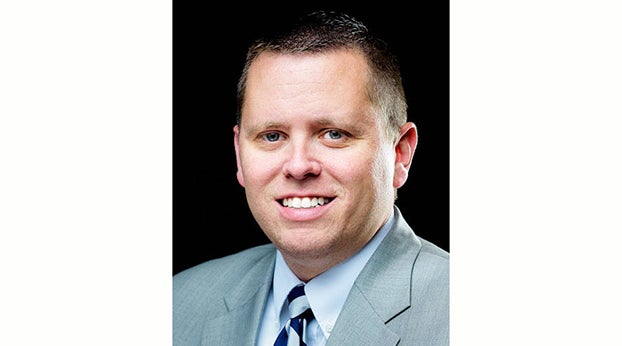K-Count to determine funding for homelessness
Published 11:31 am Tuesday, January 23, 2018
Imagine as you’re reading this comfortably at your desk or at home not knowing where you will sleep tonight or where you and your family will call home next month. Or maybe that is you, and you don’t have the answers to these questions. Homelessness is a scary thought, and for all too many of our nation’s people it is an unfortunate reality.
The U.S. Department of Housing and Urban Development’s 2017 Annual Homeless Assessment Report (AHAR) estimated the total count of homelessness within the United States at more than 553,000 people, among which more than 40,000 are veterans, and another 40,000 are unaccompanied youths. While nearly one-third of the nation’s homeless population was found to be present within California, homelessness is a devastating situation for every person that experiences it.
In Kentucky, more than 3,000 of our friends and family were found to be homeless. Kentucky’s homeless count includes the tenth highest level of unaccompanied homeless youths accounted for within our Balance of State Continuum of Care (CoC) – a category that excludes CoCs of major cities and smaller cities or regional CoCs.
More than a half-million homeless nationwide may be hard to imagine. To put that number into perspective, consider if all our more than 553,000 homeless were Kentuckians – that would be around one in every eight people. If half a million eastern Kentuckians were homeless, that would be three out of every four people you met. The annual count that measures instances of homelessness – HUD’s Point-in-Time (PIT) Estimates of Homelessness – is conducted by CoCs across the nation on a single night during the last week of January. The results, published in HUD’s AHAR, offer us a snapshot of the level of homelessness as it exists on a single night, and provides the federal government with valuable information that is used to determine funding allocations and to better combat the issue.
In a press release issued earlier this month, HUD announced funding for local homeless assistance programs across the U.S., among which 105 programs in Kentucky were awarded. HUD Secretary Ben Carson noted in the release, “HUD stands with our local partners who are working each and every day to house and serve our most vulnerable neighbors.”
Matthew Doherty, Executive Director of the U.S. Interagency Council on Homelessness provided additional commentary: “Continuums of Care are critical leaders in the work to end homelessness nationwide. When communities marshal these – and other local, state, private, and philanthropic resources – behind the strongest housing-first practices, we see important progress in our collective goal to end homelessness in America.”
The Kentucky Housing Corporation (KHC) conducts the yearly K-Count – Kentucky’s portion of HUD’s PIT – with the participation of a wide range of agencies, organizations, and individuals, including shelters, churches, clinics, Community Mental Health Centers, and many others. Each year, Jacqueline Long, Mountain Comprehensive Care Center’s Director of Housing and Grants, provides guidance for the K-Count within the Big Sandy region. As Secretary of the Kentucky Interagency Council on Homelessness, and a member of the Kentucky Balance of State CoC Advisory Board, she is acutely aware of the issue as it exists in Kentucky, and highlights the importance of agency participation and organizational or individual volunteering, which is encouraged in order to discover the most accurate levels of homelessness affecting our population.
“In this climate of budget cuts and deficits, it is more important than ever that we count as many of our region’s homeless as possible, so we can ensure that Congress recognizes the need in our region,” she noted. “With an accurate count, we can demonstrate to our nation’s leaders that resources need to be directed toward homeless services and housing.”
The many agencies addressing the issue in Kentucky’s Balance of State work collaboratively to not only provide shelter, but to remove barriers for those experiencing homelessness as well. Often, this takes the form of food banks, substance abuse and mental health counseling, community support services that train those individuals in essential life skills, fellowship with religious organizations, along with a wide variety of other services and programs. The collective goal of these organizations is to provide wraparound services that care for the whole person, and which address the individual issues that contribute to their homelessness.
Imagine once again that you are unsure of where “home” is going to be in the very near future. This time, however, you have met with a person at a local assistance program who says they can help. They connect you with a counselor who helps you overcome emotional troubles, an agency that helps you discover monetary benefits that you did not realize you were eligible to receive, and a job skills training facility that helps you develop vital skills for specific jobs in your area. With this collaborative interagency focus on your particular needs, it will be far more likely that you will soon be able to maintain housing for you and your family. The desired outcome of these agencies is to help individuals successfully develop this ability; or, for those unable to maintain housing on their own, the goal is to provide permanent housing or assistance to ensure that these most basic life needs are met.
If you or someone you know is experiencing homelessness, or is in imminent danger of becoming homeless, a variety of services and programs are available through many agencies. Contact your local shelter to learn more about resources that are available locally.
Veterans seeking housing, resources or assistance can contact their local Veterans Affairs center; or contact MCCC’s Veterans Transitional Housing Center 606-639-3178; or visit Kentucky Housing Corporation’s Operation KY Home to learn about its homeownership program at kyhousing.org/OperationKYHome.




